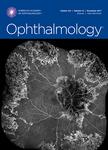版权所有:内蒙古大学图书馆 技术提供:维普资讯• 智图
内蒙古自治区呼和浩特市赛罕区大学西街235号 邮编: 010021

作者机构:Singapore National Eye Centre Singapore Singapore Eye Research Institute Singapore Ophthalmology & Visual Sciences Academic Clinical Program (Eye ACP) Duke-NUS Medical School Singapore Singapore SERI-NTU Advanced Ocular Engineering (STANCE) Singapore NTU Institute of Health Technologies Singapore School of Chemical and Biomedical Engineering Nanyang Technological University Singapore Department of Clinical Pharmacology Medical University of Vienna Vienna Austria Center for Medical Physics and Biomedical Engineering Medical University of Vienna Vienna Austria Institute of Molecular and Clinical Ophthalmology Basel Switzerland
出 版 物:《Ophthalmology》 (Ophthalmology)
年 卷 期:2021年第128卷第3期
页 面:393-400页
学科分类:1002[医学-临床医学] 100212[医学-眼科学] 10[医学]
基 金:Biomedical Research Council , Singapore, Republic of Singapore, (08/1/35/19/550) Biomedical Research Council, Singapore, Republic of Singapore Chong Duke-NUS Graduate Medical School National Medical Research Council , Republic of Singapore, (NMRC/1249/2010, NMRC/CG/C010A/2017 _SERI, NMRC/CIRG/1371/2013, NMRC/CIRG/1417/2015, NMRC/CIRG/1488/2018, NMRC/CSA-SI/0012/2017) National Medical Research Council, Republic of Singapore SingHealth
主 题:anti-hypertensive GC-IPL glaucoma hypertension medication OCT RNFL systemic medication
摘 要:Purpose: To evaluate the association between different classes of antihypertensive medication with retinal nerve fiber layer (RNFL) and ganglion cell-inner plexiform layer (GC-IPL) thickness in a nonglaucomatous multiethnic Asian population. Design: Population-based, cross-sectional study. Participants: A total of 9144 eyes for RNFL analysis (2668 Malays, 3554 Indians, and 2922 Chinese) and 8549 eyes for GC-IPL analysis (2460 Malays, 3230 Indians, and 2859 Chinese) aged 44 to 86 years. Methods: Participants underwent standardized systemic and ocular examinations and interviewer-administered questionnaires for collection of data on medication and other variables. Intraocular pressure (IOP) readings were obtained by Goldmann applanation tonometry before pupil dilation for fundoscopy and OCT imaging. Blood pressure (BP) was measured with an automatic BP monitor. Mean arterial pressure (MAP) was defined as diastolic BP plus 1/3 (systolic BP – diastolic BP). Regression models were used to investigate the association of antihypertensive medication with OCT measurements of RNFL and GC-IPL. Main Outcome Measures: Average and sectoral RNFL and GC-IPL thickness. Results: After adjusting for age, gender, ethnicity, MAP, IOP, body mass index (BMI), and presence of diabetes, we found that participants taking any type of antihypertensive medication (β = −0.83;95% confidence interval [CI], −1.46 to −0.02;P = 0.01), specifically angiotensin-converting enzyme inhibitors (ACEIs) (β = −1.66;95% CI, −2.57 to −0.75;P 0.001) or diuretics (β = −1.38;95% CI, −2.59 to −0.17;P 0.05), had thinner average RNFL in comparison with participants who were not receiving antihypertensive treatment. Use of a greater number of antihypertensive medications was significantly associated with thinner average RNFL (P for trend = 0.001). This association was most evident in the inferior RNFL quadrant in participants using ACEIs (β = −2.44;95% CI, −3.99 to −0.89;P = 0.002) or diuretics (β = −2.76;95% CI,